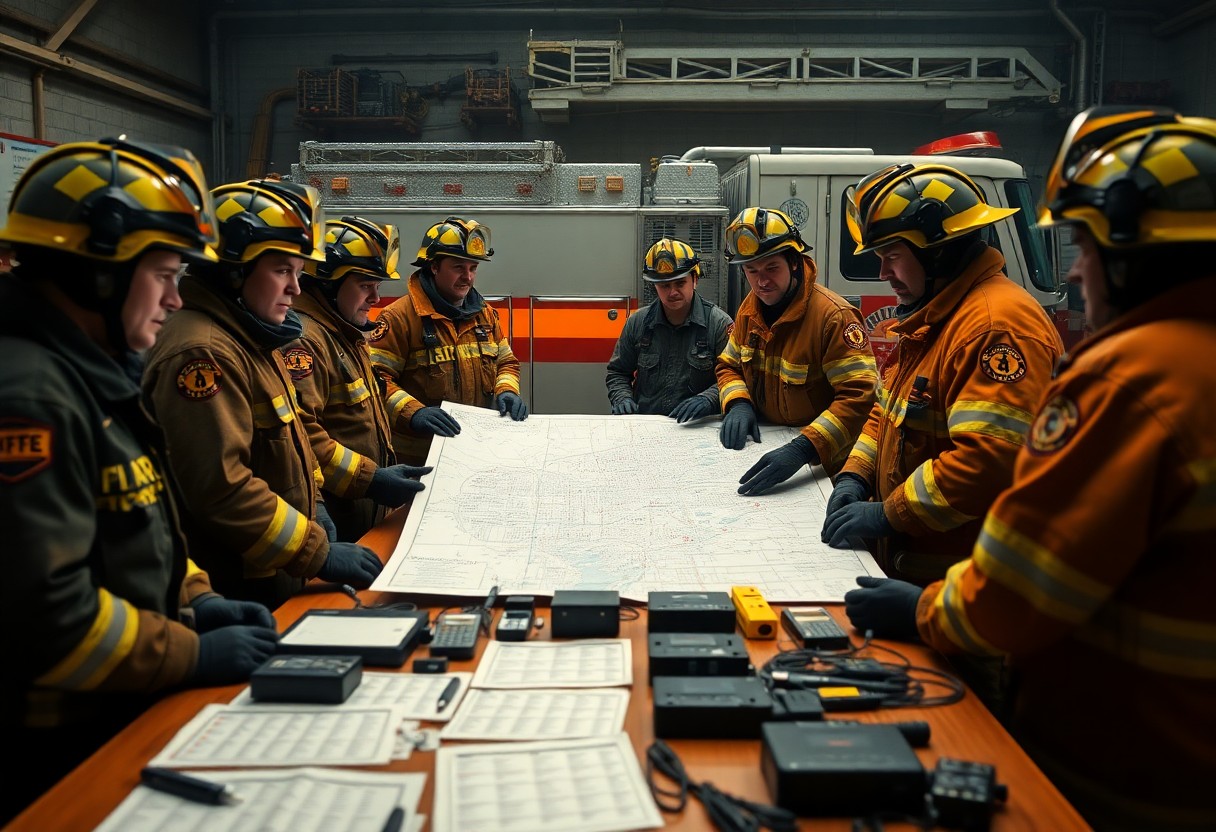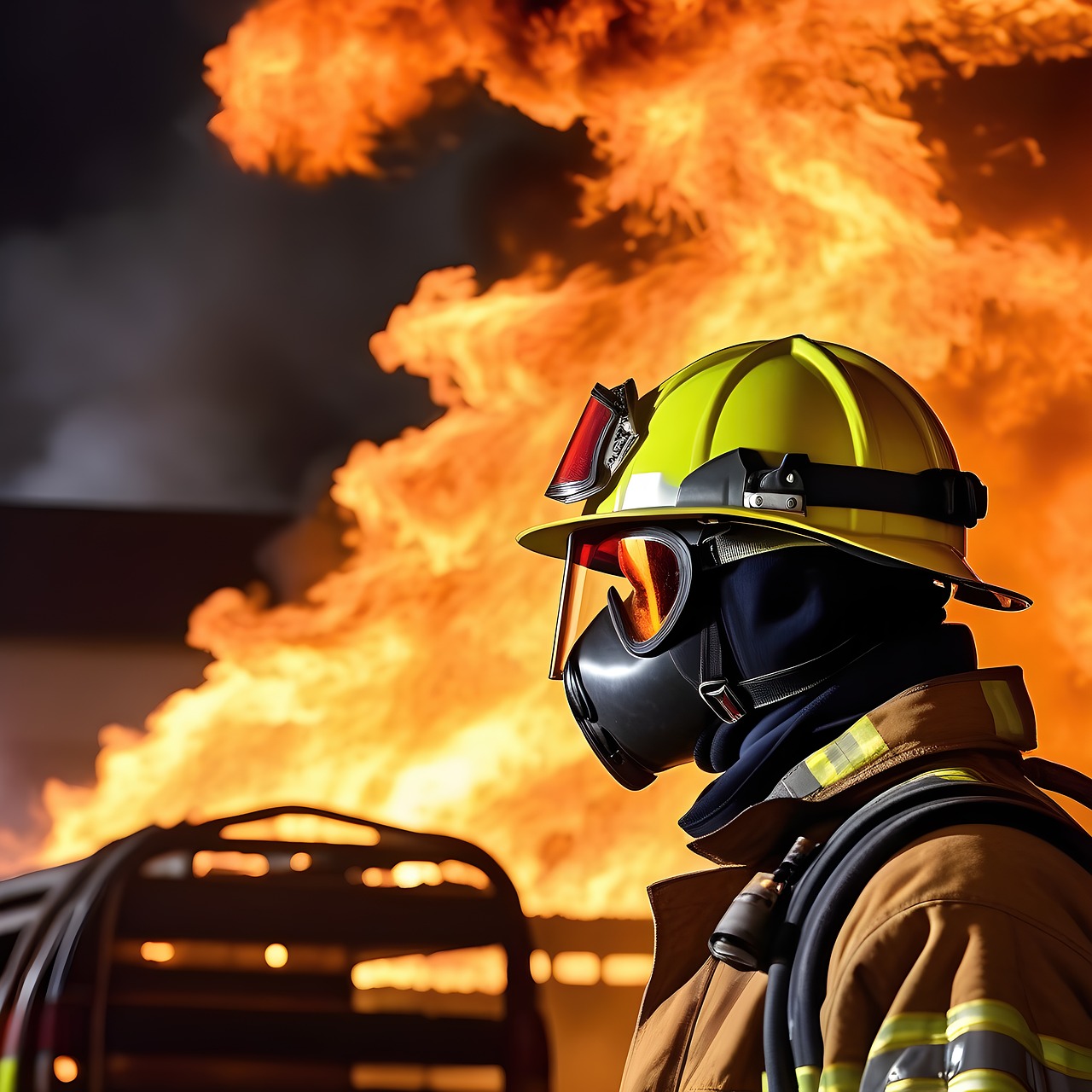Fire incidents can vary significantly, presenting unique challenges that demand your expertise and quick decision-making. Understanding how to define apparatus order for different call types is crucial in providing effective response and ensuring safety for both your crew and the public. In this guide, you will learn the strategies to optimize your response based on the nature of each incident, enhancing your operational efficiency and team coordination. Equip yourself with the knowledge to tackle any call type with confidence.
Understanding Call Types
To effectively manage your responses in the fire service, it’s vital to understand the different call types you will encounter. Familiarizing yourself with these can enhance your team’s coordination and operational efficiency. Consider the following categories:
| Call Type | Description |
| Fire Alarms | Triggered by smoke or heat detectors. |
| Medical Emergencies | Requests for urgent medical assistance. |
| Hazardous Materials | Incidents involving dangerous substances. |
| Rescue Operations | Situations requiring the extraction of individuals. |
| Public Service | Non-emergency incidents benefiting the community. |
After grasping these distinctions, you can ensure your team is prepared for any situation that arises.
Emergency vs. Non-Emergency Calls
An vital aspect of your response strategy involves distinguishing between emergency and non-emergency calls. Emergency calls demand immediate action—such as fires or life-threatening medical situations—while non-emergency calls typically require assistance but are not life-threatening. This differentiation enables you to allocate resources efficiently, prioritizing urgent matters without neglecting routine tasks.
Common Fire Service Call Scenarios
Scenarios you frequently encounter in the fire service can vary widely, encompassing diverse challenges that require prompt and educated responses. Understanding these scenarios will aid you in resource management and personnel deployment.
To prepare for the various common fire service call scenarios, you should be aware of both fire-related incidents—like structure fires and wildfires—and rescue situations involving individuals trapped or in peril. Your role may involve dealing with medical emergencies, where a swift medical response can be lifesaving, or hazardous material incidents requiring specialized equipment and training. Each scenario demands a tailored approach, so maintaining readiness and commitment to rigorous training is key for you and your team to respond effectively under pressure.
How-to Approach Different Call Types
Now, you need to understand how to effectively manage various call types in your fire service duties. Consider these key points:
| Call Type | Approach |
|---|---|
| Structure Fires | Implement immediate evacuation and suppression strategies. |
| Medical Emergencies | Assess medical needs and stabilize the patient. |
| Hazardous Materials | Establish containment and ensure personal safety. |
| Wildfires | Assess wind direction and deploy containment lines. |
| Rescue Operations | Utilize swift extraction techniques and communication. |
After implementing these strategies, you will be better equipped to handle diverse emergency situations.
Assessing the Situation Quickly
Assessing the situation quickly is vital for effective emergency response. You must gather immediate information regarding the nature of the incident, environmental hazards, and potential victims. Utilize your training to determine whether to prioritize fire suppression, medical assistance, or rescue efforts—all while maintaining situational awareness.
Prioritizing Response Based on Call Type
Call types dictate how you prioritize your response in the field. By understanding the nature of each situation, you can make informed decisions regarding the necessary resources and actions required. Assessing the severity, urgency, and impact of each call will streamline your approach and enhance overall effectiveness.
For instance, in a case of a structure fire, your immediate focus should be on the safety of potential victims and fire suppression efforts. In contrast, when responding to a medical emergency, your attention must shift to patient care and ensuring quick transport to medical facilities. Always bear in mind the potential risks involved—failing to prioritize correctly may lead to negative outcomes in high-stakes situations. Making these distinctions improves not only your response time but also the safety of those affected.
Tips for Effective Communication
Even in high-pressure situations, effective communication is necessary for maintaining safety and coordination. To enhance your communication, consider these tips:
- Stay clear and concise in your messages.
- Use standard terminology to avoid misunderstandings.
- Listen actively to dispatch and other responders.
- Confirm messages to ensure accurate information.
After implementing these strategies, you’ll foster a more effective communication environment.
Engaging with Dispatch
Tips for engaging with dispatch include keeping lines of communication open and providing accurate updates about your situation. Always inform dispatch of any changing conditions that may affect the response. Use clear codes and terminology to ensure they fully understand your needs. Regularly check in with dispatch to confirm that you are on the same page, providing them with the latest information to enhance operational efficiency.
Interacting with Other Responders
Little interactions with other responders can significantly impact overall response efforts. Ensure that you collaborate effectively by sharing updated information and coordinating actions seamlessly. Maintaining situational awareness will help you identify potential hazards and enhance teamwork during operations.
Another key aspect of interacting with other responders is establishing trust and clear lines of communication. Being proactive in sharing critical information can lead to improved outcomes on the scene. For example, make sure to inform your team about any emerging hazards, which could potentially cause harm. Conversely, highlighting positive actions taken by fellow responders can foster a collaborative spirit and boost morale. Your ability to interact effectively enhances overall team performance and safety.
Factors Influencing Apparatus Order
After understanding the vital elements of fire response, various factors play a significant role in determining the app apparatus order for different incidents. Consider these key factors:
- Type of incident
- Severity of the incident
- Resource availability
- Geographic location
The interplay of these elements shapes the decisions you make while responding.
Type and Severity of Incident
You must assess both the type and severity of each incident to determine the appropriate apparatus order. Different emergencies, such as structure fires or hazardous materials situations, require distinct levels of response and resource allocation.
Resource Availability and Readiness
Apparatus readiness and availability are key components when establishing your response plan. Efficiently managing your resources can significantly impact response effectiveness.
Plus, ensuring that your fire engines and specialized units are always in a high state of readiness can make a significant difference during an incident. Regular maintenance and training ensure your crews can operate effectively and are prepared for emergencies. By managing resource availability and readiness, you enhance operational efficiency and improve overall safety for your team and the community.
Strategic Deployment of Resources
Despite the unpredictable nature of emergency situations, effective strategic deployment of resources enhances your fire service’s response capability. Proper planning and organization allow you to allocate personnel and equipment to the right locations, ensuring that you can navigate various call types efficiently. This preparedness not only improves response times but also enhances overall effectiveness during critical incidents.
Choosing the Right Apparatus
Any fire service professional understands the significance of selecting the appropriate apparatus for each emergency. Your choice should align with the specific requirements of the incident, ensuring that the capabilities of the apparatus match the demands of the situation at hand. This consideration leads to optimized performance and effective incident management.
Positioning for Maximum Efficiency
Choosing the right positions for your apparatus can significantly impact your team’s performance and safety during operations. You want to assess the scene and strategically park your vehicles where they can be easily accessed while keeping emergency exits clear. Ensure that your positioning allows for quick deployment and permits easy movement for personnel and equipment. Optimal positioning not only protects your crew but also enhances operational efficiency, allowing for a seamless response to the evolving dynamics of incidents.
To achieve maximum efficiency, it is crucial to consider factors such as scene layout, traffic flow, and the positioning of hazards. By evaluating these aspects, you can establish a safe perimeter for your operations and implement effective strategies. This strategic approach allows for fluid communication among team members and ensures that resources are effectively coordinated, minimizing risk while maximizing operational capability and success.
Continuous Learning and Adaptation
Keep your skills sharp by embracing continuous learning and adaptation. In the fast-paced environment of the fire service, staying updated with the latest techniques and technologies is crucial. This commitment not only enhances your personal effectiveness but also improves your team’s overall response capabilities during emergencies.
Training for Diverse Scenarios
On a routine basis, you should engage in training exercises that simulate a variety of scenarios. This will help you and your team prepare for the unexpected, ensuring you are ready to tackle any situation that may arise during your service.
Evaluating Past Responses for Improvement
Continuous evaluation of past responses helps identify areas that need enhancement. With each incident, you should analyze your actions and decision-making processes to find patterns in your performance. This reflection will enable you to implement crucial adjustments to your strategies, improve safety, and enhance the effectiveness of future responses. By scrutinizing both successes and failures, you’re likely to discover positive practices that can be reinforced and tactics that require modification to mitigate risks in similar future scenarios.
Summing up
Taking this into account, understanding how to define apparatus order for various call types in the fire service enhances your response efficiency and overall safety. By assessing the specific characteristics and requirements of each incident, you can ensure that the right equipment and personnel are dispatched promptly. This structured approach allows you to streamline operations while adapting to the complexities of emergency scenarios, ultimately improving your team’s effectiveness in protecting lives and property.
FAQ
Q: What is the significance of defining apparatus order in handling various call types in fire service?
A: Defining apparatus order is important in the fire service as it ensures an efficient response to different emergencies. Each type of call may require a specific arrangement of vehicles and equipment depending on the nature of the incident, whether it’s a fire, medical emergency, or hazardous materials situation. This organized approach aids in minimizing response times, optimizing resource deployment, and enhancing teamwork among firefighters. By establishing a clear apparatus order, fire departments can improve their overall operational readiness and effectiveness during incidents.
Q: How can fire service personnel effectively tackle different call types using the defined apparatus order?
A: Fire service personnel can effectively handle various call types by first understanding the specific requirements associated with each type of emergency. Training is vital, as it allows personnel to familiarize themselves with the apparatus order established for different scenarios, such as fire suppression, rescue operations, or medical emergencies. Regular drills and simulations can help reinforce these procedures. When responding to a call, the incident commander should assess the situation and deploy the appropriate apparatus and resources based on the pre-defined order, ensuring that the right tools and personnel are available when needed most.
Q: What challenges can arise from not having a well-defined apparatus order in place?
A: Not having a well-defined apparatus order can lead to a series of challenges during emergency responses. For instance, confusion among personnel about which apparatus to deploy may delay the response, ultimately impacting the outcome of the incident. Insufficient communication and coordination might occur if teams are not accustomed to the established order, resulting in redundancy or a lack of necessary resources on-site. Additionally, this disorganization can increase the risk of safety hazards for both responders and civilians. Regular reviews and updates of the apparatus order, combined with thorough training, can mitigate these challenges and enhance overall operational efficiency.


